Japanese Camellia Care - Learn All About Camellia Japonica
Camellia japonica is a unique plant which develops characteristic beautiful, large flowers. Depending on the variety, it can be grown in the garden, as well as in a pot. Despite its charm, it's a quite demanding plant, recommended mainly to those who have some gardening experience. Check the most popular camellia japonica varieties and learn how to take care of this plant.
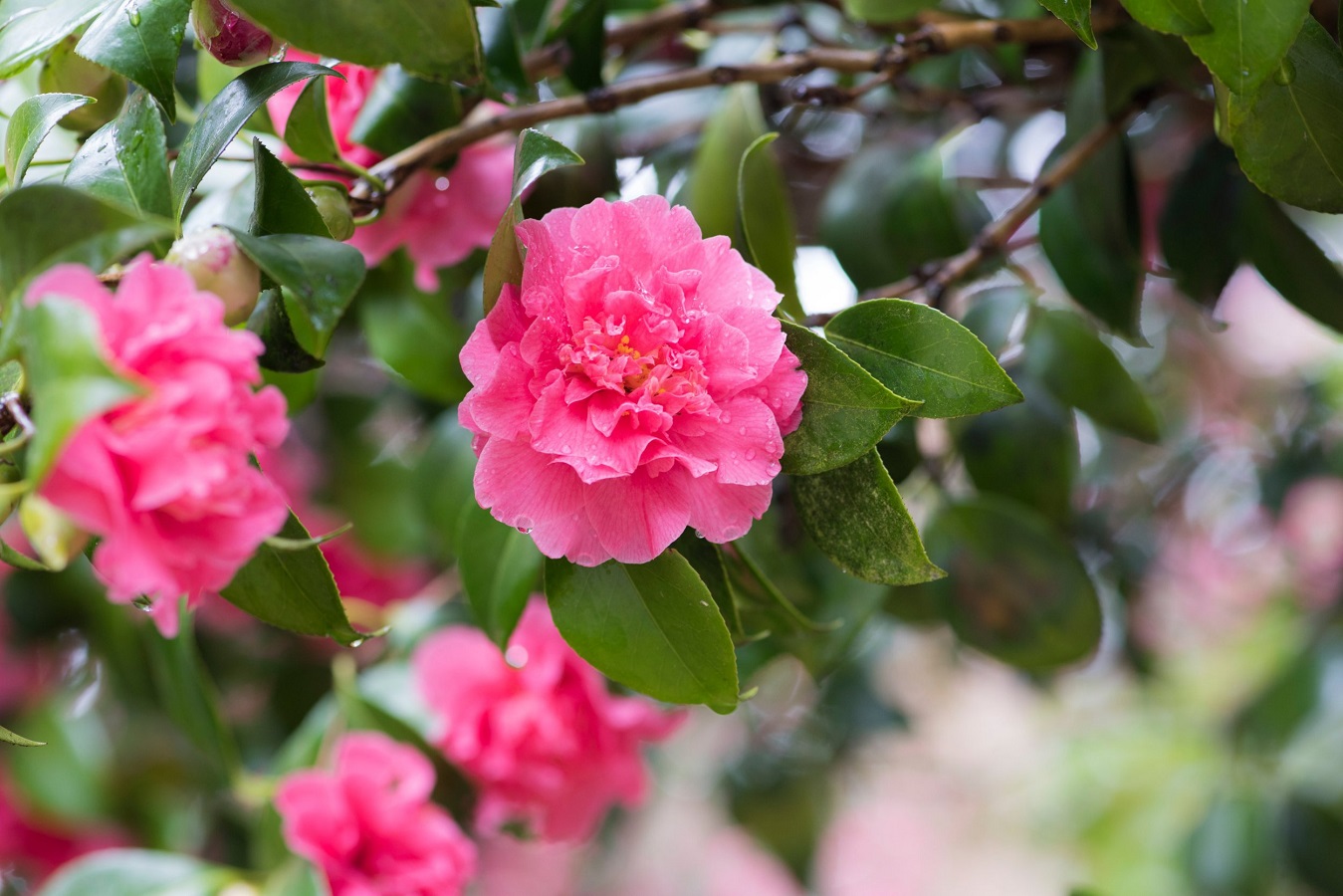
What is camellia japonica, and where does it come from?
Japanese camellia is considered a wintergreen ornamental shrub which produces many magnificent flowers during the blooming season. In nature, it grows in the northern China and Korea, typically in forests.
Because this shrub doesn’t like cold, it’s typically planted in pots in cold climates. Thanks to this, one can store it in a safe place in winter. Among many varieties of the plant, white, pink and red are the most popular camellia flower colors.
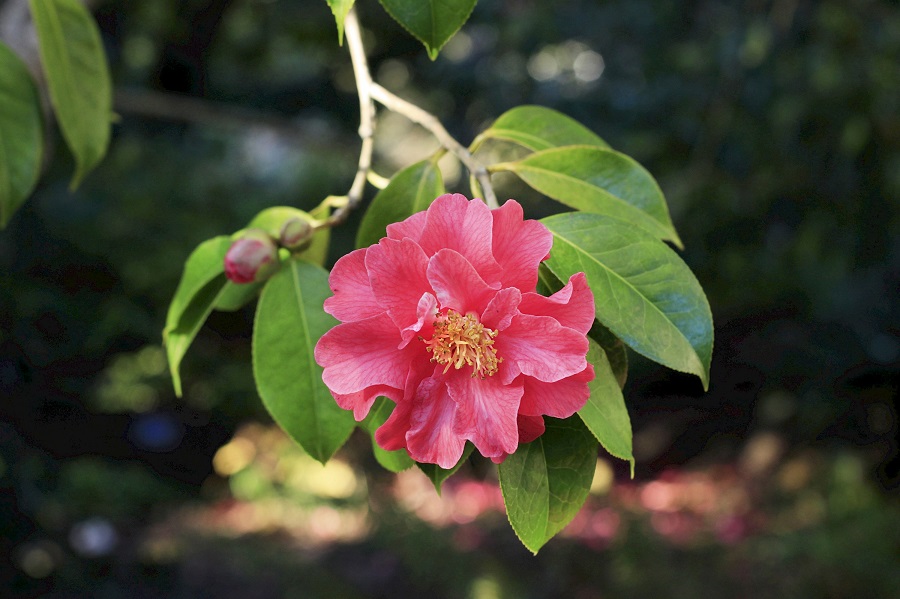
The most popular varieties of camellia japonica
There are many camellia japonica varieties. Three of them are the most popular:
- Camellia Donation, characteristic for its large pink flowers.
- Camellia Black Lace is one of the oldest camellia varieties. It’s a hybrid combining two types, thanks to which the plant can endure low temperatures. Its flowers are similar to dahlia flowers, and the blooming season lasts long - from 6 to 8 weeks.
- Camellia Elegans - this type of Japanese camellia has characteristic full pink flowers, and the blooming season starts in April.
Growing a camellia japonica in the garden - choosing the spot
Camellia japonica can be easily grown in the garden. It’s usually not planted directly in the ground (in cold climate zones), but kept as a shrub in a container. Make sure to pick a good spot for it, so it grows well.
Half-shade, e.g. under trees makes the best spot for a camellia japonica. You can also place it next to a hedge - this way, the camellia plant has an extra protection against the wind.
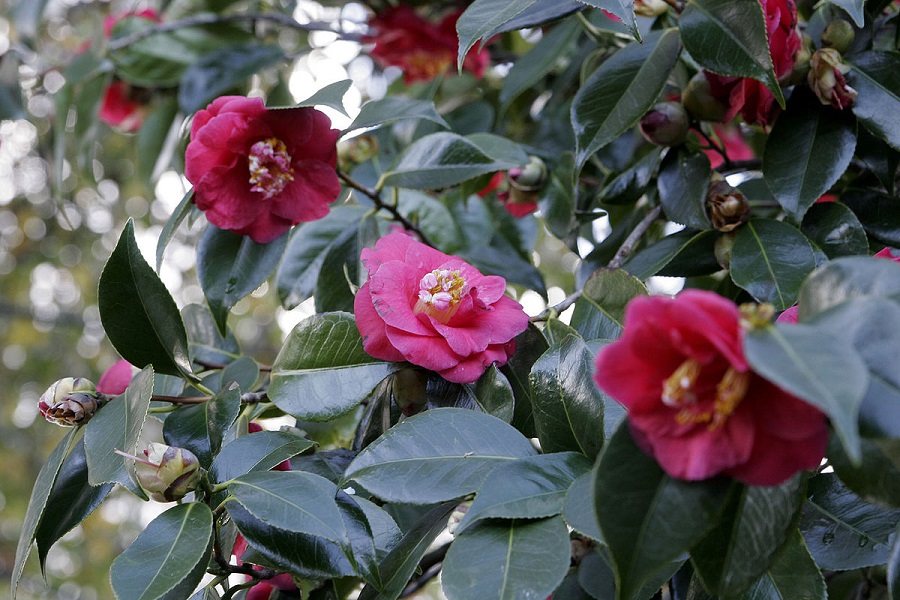
Does camellia japonica need feeding?
Japanese camellia requires balanced feeding throughout the whole year. Multicomponent fertilizers available in every gardening store are perfect for this purpose. They are typically applied after diluting them in an appropriate amount of water.
Don’t feed your camellia japonica more than once a month. Too many nutrients might be harmful for the plant. Remember that a camellia plant cannot be watered with calcium-rich solutions.
Camellia japonica - propagation
Japanese camellia is not difficult to propagate. Stem cutting is the easiest, but not always the most effective method. The stem cuttings should be placed in fertile soil. Unfortunately, such seedlings are quite difficult to root - the soil should be 25°C (77°F), while the surroundings should be 20-22°C (68-71.6°F). That’s why it’s usually done by experts.
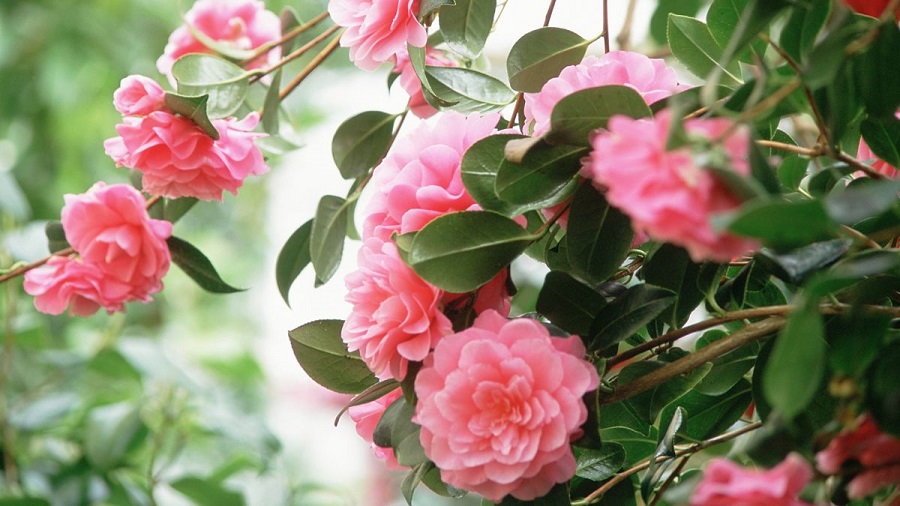
Wintering camellia japonica
Camellia japonica behaves variously in winter - it depends on the variety. The ones that are the most resistant to frost can be left outside for winter in cold climates - you can protect only its roots, just like you do with other plants.
Delicate varieties of Japanese camellia grown in containers have to be protected against low temperatures. You can winterize them in the garage or a utility room. Remember to water the potted camellia regularly - the soil should never be dry.
Camellia japonica care - does the plant need trimming?
The plant doesn’t require trimming, which is a big advantage. So-called rejuvenation pruning is typically performed once every few years. The plant should be trimmed after it stops blooming. Cut only the branches that cross or grow too densely.
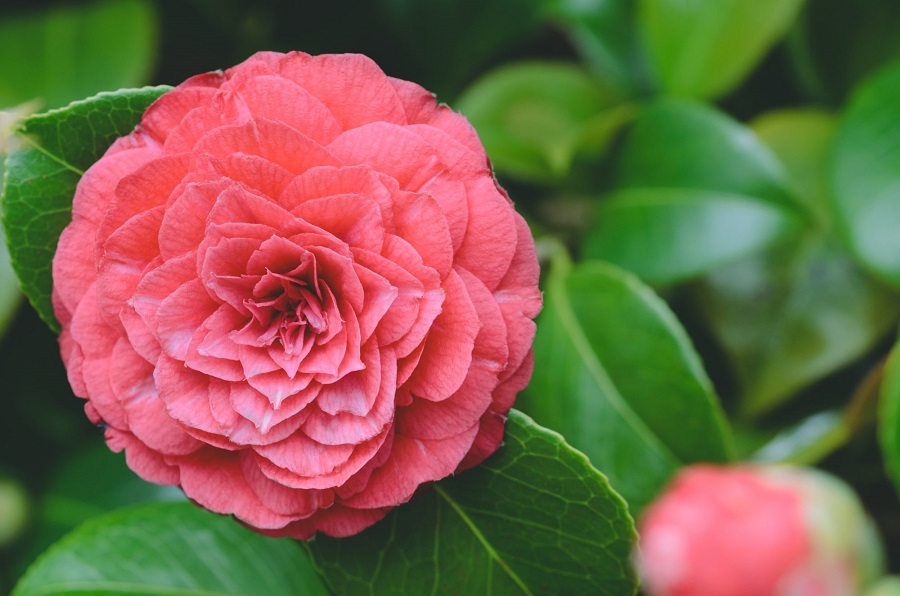
Japanese camellia - problems and diseases
As any other plant, Japanese camellias are prone to various diseases and pests. Drooping buds and flowers is the most popular problem. It usually happens when the temperature is too high, or the soil is overly dry. Too high soil pH is also a potential threat to the plant.
Aphids and other pests from coccid insects, including armored scale insects are a common issue of a Japanese camellia. You can prevent both of them by using special insecticides or natural remedies.
Camellia japonica - price
Camellia japonica is not the most expensive plant. But keep in mind that the price of a Japanese camellia often depends on the variety and the size of the plant. The smallest seedlings cost about $15.
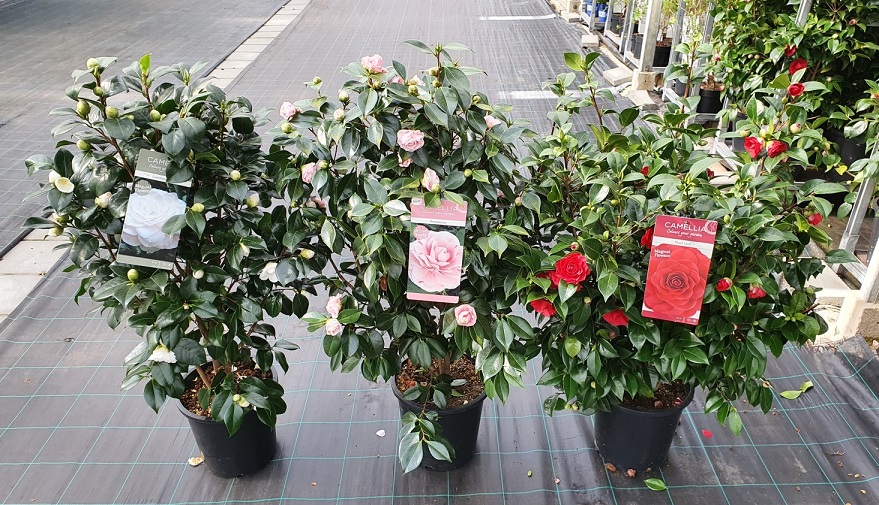
📍 What's the best soil for a Japanese camellia?
Providing a good soil mix is one of the most important aspects of camellia japonica care. Thanks to this, it can grow properly. This type of plant needs fertile and lightweight soil with rich humus content. It will develop properly only in such conditions.
📍 When does a camellia japonica bloom?
A potted Japanese camellia 'magasaki' kept indoors can bloom in January and keep flowering until spring. Plants growing outside in the garden typically bloom later. In this case, flowers appear starting from the end of February until the beginning of April.
📍 How to grow camellias?
Are you wondering how to plant a Japanese camellia? It's not complicated. Prepare a hole at least twice as large as the root mass of the purchased camellia japonica, and put the plant in there. Make sure to follow the guidelines suggested by experts.
📍 How to take care of a Japanese camellia?
Camellia japonica requires a careful care. Most importantly, it needs regular watering in winter and spring. Watering can be limited in summer. If the plant is growing in a pot, make sure the soil is constantly moist.
Featured articles




